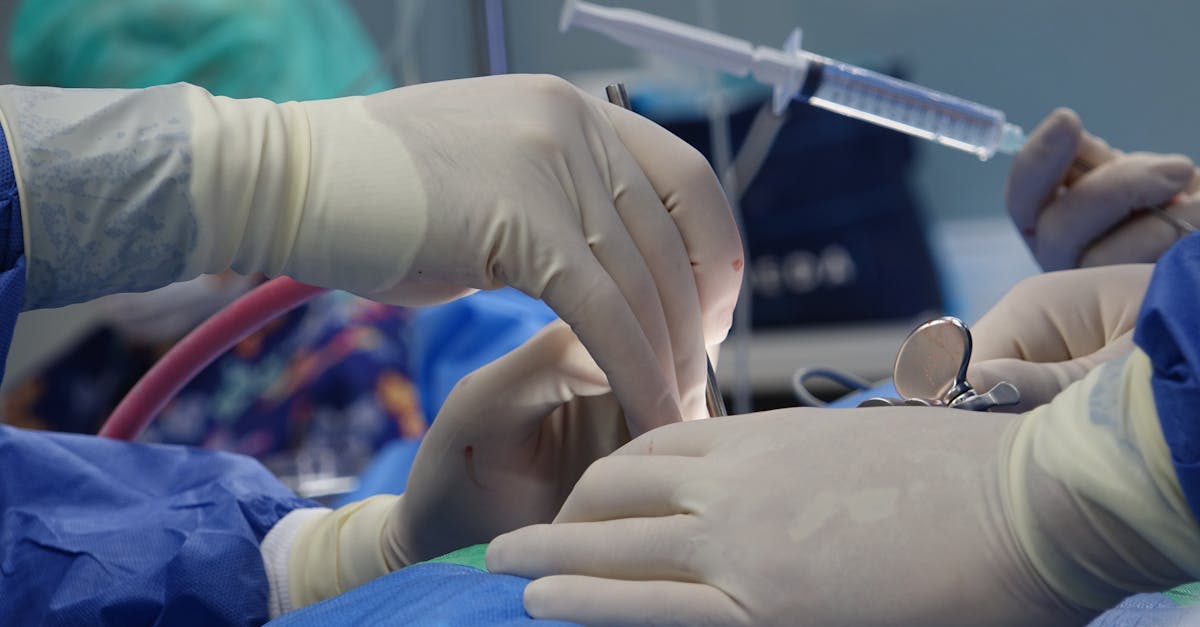Are you struggling with labyrinthitis discomfort and its impact on your daily life?
In Short: Labyrinthitis causing you dizziness and imbalance? Discover how to ease symptoms and restore stability using innovative techniques. Pulse Align offers a unique approach to vertigo treatment that promotes a calmer inner ear. Experience improved balance and reduced anxiety through simple methods designed to empower your wellness journey. Reclaim your health and wellness at Pulse Align Clinics. BOOK YOUR APPOINTMENT today!
Are you struggling with dizziness and balance problems?
Easing Labyrinthitis Discomfort: Can Pulse Align Promote a Calmer Inner Ear? Labyrinthitis can lead to debilitating symptoms such as vertigo, dizziness, and even anxiety. Understanding dizziness causes and discovering effective vertigo treatments is essential for regaining equilibrium. Pulse Align offers innovative techniques designed to alleviate balance problems, providing a gentle and holistic approach to managing the discomfort associated with labyrinthitis. Through targeted interventions, individuals may find relief from dizziness and experience improved stability, ultimately enhancing their quality of life.

When navigating the challenges of labyrinthitis, clients often seek natural methods to promote well-being, regain balance, and improve posture. At the core of this journey lies the concept of neuromuscular recalibration—a gentle approach aimed at restoring harmony within the body. Pulse Align is here to guide you through this wellness journey, fostering a calmer inner ear through thoughtful techniques and supportive care.
Labyrinthitis affects the inner ear, leading to discomfort and imbalance, often with symptoms like dizziness. Instead of targeting these symptoms directly, Pulse Align focuses on enhancing muscle tone and symmetry to support the body’s natural ability to self-correct. With gentle stimulation techniques, clients can explore how restoring balance contributes to a solid foundation for functional movement. Our approach ensures that your journey to comfort and improved posture happens naturally and supportively.
Many clients have discovered the positive effects of Pulse Align. Words from those who have experienced our services illustrate how our approach can help improve posture naturally and reduce tension. By focusing on holistic benefits, our clients have reported feeling more at ease and better equipped to tackle life’s daily challenges.
If you’re exploring ways to enhance your well-being or support your family’s journey to balance, consider visiting the Pulse Align website. We invite you to book a consultation and discover how our clinics in cities like Montreal, La Prairie, Terrebonne, Chicoutimi, Charlesbourg, Saint-Jérôme, Châteauguay, Sainte-Marie, Les Escoumins, Granby, and Panama City can provide the support you need. Remember, Pulse Align complements your healthcare services, providing an additional layer of support for your well-being.
- Understanding Labyrinthitis: Inflammation affecting the inner ear.
- Primary Symptoms: Dizziness, vertigo, and potential hearing loss.
- Connection to Fatigue: Can lead to debilitating tiredness.
- Identifying Triggers: Often linked with viral infections or stress.
- Pulse Align Techniques: Gentle methods to restore balance.
- Holistic Approach: Emphasis on non-invasive treatments.
- Patient Stories: Testimonies of recovery from labyrinthitis discomfort.
- Improving Quality of Life: Strategies to alleviate symptoms.

Labyrinthitis is an inflammatory condition impacting the inner ear, leading to symptoms like dizziness, vertigo, and fatigue. Finding effective relief is crucial for improving quality of life. At Pulse Align, a holistic approach focusing on neuromuscular health and posture improvement can play a vital role in alleviating labyrinthitis symptoms. This article will delve into how targeted interventions can help promote a more balanced and calming inner ear environment.
Understanding Labyrinthitis and Its Symptoms
Labyrinthitis arises when the inner ear’s labyrinth becomes inflamed, often resulting in symptoms such as dizziness and hearing issues. These disturbances can severely impact daily functioning, often leading to increased dizziness and anxiety. This condition may often stem from viral infections or other ear-related illnesses. Recognizing the signs early on can facilitate timely treatment and management strategies.
Effective Treatment Techniques
There are various methodologies to combat labyrinthitis. Pulse Align emphasizes the significance of tailored treatment plans which may incorporate natural remedies for dizziness and nausea, vestibular rehabilitation exercises, and core strengthening techniques. These approaches help address the underlying issues causing imbalance and promote a calmer inner ear.
Customizing Your Exercise Regimen
Engaging in specific vertigo exercises can effectively target symptoms. For instance, BPPV exercises at home can assist individuals prone to positional vertigo. These exercises help retrain the brain’s response to inner ear signals, fostering better balance and reducing feelings of dizziness.
Moreover, trunk exercises focusing on core stability enhance posture and alignment, leading to improved balance. It’s beneficial to incorporate modifications to accommodate various fitness levels, ensuring that everyone can safely engage with these practices.
Building a Holistic Wellness Framework
Pulse Align advocates for a comprehensive approach to health that includes lifestyle adjustments and mindfulness. Utilizing posture correction techniques can positively impact the inner ear and overall body symmetry, reducing unwanted symptoms of dizziness.
In addition, exploring dizziness home remedies, such as hydration and balanced nutrition, can further alleviate discomfort associated with labyrinthitis. Ensuring an overall supportive environment helps cultivate resilience against future episodes.
Consultation and Personalized Guidance
To maximize the benefits of these strategies, consider scheduling a consultation with Pulse Align. Our team will work with you to create a personalized exercise plan tailored to your specific needs, emphasizing effective vestibular rehabilitation techniques.
Whether you’re dealing with labyrinthitis, Meniere’s disease, or vestibular neuritis, understanding how to stop vertigo attacks is essential. Our holistic approach aims to foster recovery and enhance your overall well-being while empowering you to take control over your health journey.
By taking steps to engage in neuromuscular health practices and benefiting from our dedicated guidance, you can achieve greater stability from dizziness when standing up suddenly and improve your quality of life. To explore ways Pulse Align can support you, don’t hesitate to reach out!
| Aspect | Pulse Align Approach |
| Focus Area | Inner ear balance restoration |
| Techniques Used | Gentle manipulation and neuromodulation |
| Symptom Relief | Reduces dizziness and promotes stability |
| Patient Experience | Empathetic and personalized care |
| Combination with Other Treatments | Complementary to conventional therapies |
| Focus on Education | Empowers patients with information |
| Long-term Benefits | Improved quality of life and wellness |
| Patient Testimonials | Positive feedback on symptom management |
| Accessibility | Easy-to-follow guidelines provided |

Client Testimonials: Embracing a Calmer Inner Ear with Pulse Align
Clients from diverse regions including Mont-Royal and Sainte-Marie have shared their transformational experiences with Pulse Align, highlighting the profound impact of our gentle techniques in easing labyrinthitis discomfort. Many have reported significant improvements in their overall wellness, attributing it to Pulse Align’s unique approach that harmonizes the body’s natural ability to recalibrate and restore balance.
One client from Châteauguay expressed, “After a few sessions at Pulse Align, I felt my dizziness begin to dissipate. It was a relief to experience such natural improvements without harsh interventions. The team’s understanding and dedication to holistic recovery made all the difference in my wellness journey.”
Another satisfied client who frequents our Deux-Montagnes clinic shared, “Navigating life with labyrinthitis was daunting. However, the gentle methods offered at Pulse Align have provided me with effective tools to manage my symptoms. I feel more in control and empowered to reclaim my health.” Their experience underscores how our approach complements the services of healthcare teams, enhancing the support clients and their families receive.
In areas like Terrebonne and Les Escoumins, clients have also noted a remarkable change in their quality of life. One patient noted, “The calming techniques used here have drastically reduced my anxiety around dizziness, making daily activities much more manageable.” This highlights the relevance and accessibility of Pulse Align’s offerings, particularly for those dealing with the ongoing implications of labyrinthitis.
As our clients from Chicoutimi and Saint-Jérôme continue to share their success stories, it is clear that many are discovering not just relief but rejuvenation. The collaboration between Pulse Align and healthcare providers fosters a comprehensive wellness environment that promotes healing in every sense.
Join the growing community of individuals benefiting from our tailored techniques. For local clients seeking this invaluable support, visit Our Clinics to find your nearest Pulse Align location and embark on your own journey towards enhanced balance and well-being.
Labyrinthitis and Its Impact on Your Life
Labyrinthitis is an inflammatory condition that affects the labyrinth in the inner ear, a crucial component for maintaining balance and hearing. Commonly characterized by acute vertigo, this condition can also lead to debilitating feelings of dizziness and extreme fatigue. Symptoms are often intermittent, and patients may find that anxiety and stress exacerbate their conditions.
Recognizing the signs of labyrinthitis is essential, especially since it can occur alongside viral infections or emerge as a consequence of other ear conditions. Early identification allows for timely intervention, which can drastically improve an individual’s quality of life.
Navigating Labyrinthitis Relief
At Pulse Align, we offer effective strategies for easing the challenges presented by labyrinthitis. Our gentle and therapeutic techniques aim to alleviate dizziness and help patients regain their balance, promoting a smoother journey through this taxing condition. Our approach is comprehensive and ensures that every individual has access to solutions tailored to their unique needs.
Our Mission
At Pulse Align, our mission is to deliver evidence-based, client-centered treatments that address the underlying causes of pain and dysfunction. By integrating advanced techniques and technologies, we strive to empower each person to take control of their health, ensuring a high standard of care, lasting relief, and an improved quality of life.
Discover how our gentle approach can relieve the symptoms of labyrinthitis and significantly improve your day-to-day living. By exploring our expert insights and treatment options, you can actively work towards restoring your balance and enhancing your overall wellness.
Relief from Chronic Pain with TAGMED’s Spinal Decompression Therapy
TAGMED offers an advanced Spinal Decompression Therapy that serves as a non-surgical solution tailored for patients dealing with moderate to severe disc issues, including herniated discs, bulging discs, spinal stenosis, or foraminal stenosis. This specialized technique is designed to gently reduce pressure on affected discs and nerves, enhancing mobility and alleviating pain while supporting the body’s natural healing process. If conventional treatments have plateaued, consider exploring how TAGMED’s evidence-based approach can help you regain an active, comfortable life.
Have you tried conventional treatments and still struggle with persistent back pain due to a severe disc condition?
The core mechanism of TAGMED’s neurovertebral decompression involves applying a controlled and progressive traction force to the spine. This method is effective as it increases the space between vertebrae, reducing pressure on intervertebral discs and nerve roots. Enhanced fluid circulation in the targeted area not only alleviates pain but also reduces inflammation. Consequently, individuals with chronic back issues can experience profound relief, making this a reliable, non-invasive solution.
Specific benefits of TAGMED’s spinal decompression therapy include its efficacy in alleviating chronic pain and symptoms associated with conditions such as herniated discs, degenerated disc disease, or facet syndrome. By effectively reducing pressure on nerve structures and promoting optimal fluid circulation around the discs, this treatment speeds up recovery and enhances the quality of life for those suffering from persistent discomfort.
Compared to traditional treatments like pain medications, corticosteroid injections, or surgery, TAGMED’s neurovertebral decompression stands out. It offers a non-invasive alternative with minimized risks associated with medications and a potentially faster recovery period. This makes it a compelling choice for individuals seeking safer and evidence-based alternatives for treating chronic pain.
Real-world examples and testimonials reveal the tangible benefits of TAGMED’s neurovertebral decompression. Patients report lasting pain relief, quicker resumption of daily activities, and reduced reliance on pharmaceuticals. These firsthand accounts validate the practical advantages and effectiveness of this therapeutic approach.
TAGMED’s spinal decompression technology is foundational in promoting healing and improving the condition of patients suffering from chronic pain associated with herniated or bulging discs, allowing them to reclaim movement and enhance daily living.
For those navigating the challenges of labyrinthitis, Pulse Align offers transformative benefits that can remarkably improve overall wellness. Utilizing gentle techniques, clients often experience improved posture, reduced discomfort, and enhanced well-being, leading to increased mobility and a greater sense of balance in their lives.
Clients frequently share positive experiences with Pulse Align, praising the supportive environment and the compassionate approach that prioritizes their individual needs. This focus on client-centered care ensures that every person feels heard and valued in their journey toward wellness.
If you are ready to take the next step in your wellness journey, don’t hesitate to discover the Pulse Align difference today. Schedule your consultation now and experience the holistic approach that can guide you toward natural pain relief and rejuvenation of your body’s innate healing powers.
Embrace the gentle, non-invasive techniques at Pulse Align and let us support your body’s natural healing abilities. Together, we can help you reclaim your health and promote a sense of calmness within.

Do you suffer from a condition that responds little or not at all to conservative treatments?
At Pulse Align, we understand how discomfort and tension in the body can impact your daily life. Our innovative and non-invasive method utilizes gentle, imperceptible pulses to support the body’s natural balance and posture. By focusing on muscle tone symmetry, Pulse Align helps to alleviate various forms of tension, promoting overall well-being and comfort. This gentle approach addresses the underlying factors contributing to discomfort, allowing clients to experience a renewed sense of peace in their daily activities.
Rather than targeting discomfort directly, Pulse Align emphasizes the body’s inherent ability to recalibrate itself naturally. Our approach results in remarkable improvements that not only lead to increased comfort and better posture but also enhance functional balance. Clients often report feeling lighter and more aligned, which contributes to an enjoyable and active lifestyle. At Pulse Align, we support the body in its journey toward improved wellness without focusing on medical conditions or symptoms.
What sets Pulse Align apart is our personalized approach to wellness. We invite clients to share their unique experiences, and many have discovered significant improvements in tension and discomfort with our gentle interventions. Testimonials reflect a journey toward increased comfort and balance, allowing clients to engage in activities they love without hesitation. Families can confidently explore our services together, knowing that we cater to clients of all ages, including children and expecting parents.
To learn more about how Pulse Align can support you and your family’s overall wellness journey, we invite you to visit our website and explore our services. With locations in La Prairie, Mont-Royal, Terrebonne, and many others, finding the right Pulse Align clinic is just a click away. Schedule a consultation to discover how our safe, non-invasive approach can work alongside your healthcare services to enhance your well-being. Book an appointment online today at Pulse Align, and take the first step toward restoring harmony in your body.
Frequently Asked Questions
Vertigo
- La rééducation vestibulaire prend-elle longtemps ?Cela dépend de la cause et de la gravité. Quelques semaines à plusieurs mois sont parfois nécessaires pour une amélioration significative.
- Does walking help reduce vertigo?Careful, regular movement can help the brain adapt and improve balance over time.
- Les transports peuvent-ils déclencher des vertiges ?Le mal des transports est un trouble de l’équilibre causé par des signaux sensoriels contradictoires, pouvant provoquer vertiges et nausées.
- Les vertiges sont-ils dangereux ?Ils ne sont pas toujours dangereux, mais peuvent causer des chutes. Il est important d’identifier la cause sous-jacente.
- L’anxiété aggrave-t-elle les vertiges ?Oui, la peur des vertiges peut créer un cercle vicieux, augmentant l’anxiété et la sensation d’instabilité.
- Can a vitamin B12 deficiency cause vertigo?Severe deficiency can cause neurological symptoms, including dizziness, but it’s less common.
- Is surgery necessary?Rarely. Surgery may be considered for certain inner ear conditions if other treatments fail.
- Can vertigo occur at night?Yes, BPPV can occur when turning in bed, causing nocturnal vertigo episodes.
- Les troubles de l’équilibre et les vertiges sont-ils liés ?Oui, les vertiges sont l’une des principales causes de troubles de l’équilibre, mais pas la seule.
- La kinésithérapie vestibulaire est-elle efficace ?Oui, elle permet de rééduquer le système de l’équilibre, aidant à compenser les dysfonctionnements de l’oreille interne.
Sophie Morel believes that knowledge is the most powerful step toward healing—and she’s here to illuminate the path forward for anyone facing the challenges of vertigo. At Pulse Align, Sophie not only highlights the latest breakthroughs in neuromodulation and non-invasive health technologies but also translates complex research into practical, everyday guidance. Her approach is grounded in empathy and fueled by a genuine drive to help readers find balance, both literally and figuratively. From exploring advanced treatments to sharing firsthand patient stories, Sophie’s heartfelt advocacy ensures that no one has to face the spinning world of vertigo alone.
Medical Disclaimer
The information and advice provided on this site do not replace the advice, diagnosis, or treatment of a healthcare professional. Please note that the author of this article is neither a doctor nor a specialist in a medical specialty as defined by the Collège des médecins du Québec. Manual medicine, functional medicine, and sports medicine as described on this site exclude any medical treatment or diagnosis made by a doctor or medical specialist. Always consult your doctor for any medical questions. For more details, please read our complete Legal Notice.
References
- Grubb, B. P. (1999). Pathophysiology and differential diagnosis of neurocardiogenic syncope. The American Journal of Cardiology, 84(8), 3–9. https://www.sciencedirect.com/science/article/pii/S0002914999006918
- ALSharif, D. S. (2021). An Examination of the Potential for Autonomic Nervous System Responses and Postural Sway to Serve as Indicators of Visual-Vestibular Mismatch. Temple University. https://search.proquest.com/openview/8f9dec4952045e09ec36542185cffc12/1?pq-origsite=gscholar&cbl=18750&diss=y
- Jaradeh, S. S., & Prieto, T. E. (2003). Evaluation of the autonomic nervous system. Physical Medicine and Rehabilitation Clinics, 14(2), 287–305. https://www.pmr.theclinics.com/article/S1047-9651(02)00121-3/abstract
- Nanda, A., & Tinetti, M. E. (2003). Chronic Dizziness and Vertigo. In Geriatric Medicine (pp. 995–1008). Springer-Verlag. https://doi.org/10.1007/0-387-22621-4_68
- Li, Y., Yang, L., Dai, C., & Peng, B. (2022). Proprioceptive cervicogenic dizziness: a narrative review of pathogenesis, diagnosis, and treatment. Journal of Clinical Medicine, 11(21), 6293. https://www.mdpi.com/2077-0383/11/21/6293
- (20+) Facebook. (n.d.). Retrieved December 19, 2024, from https://www.facebook.com/
- Guerra, J., & Cacabelos, R. (2019). Pharmacoepigenetics of vertigo and related vestibular syndromes. In Pharmacoepigenetics (pp. 755–779). Elsevier. https://www.sciencedirect.com/science/article/pii/B9780128139394000280
- Okada, M., Matsuto, T., Satoh, S., Igarashi, S., Baba, M., Sugita, O., & Okada, M. (1996). Role of pulse wave velocity for assessing autonomic nervous system activities in reference to heart rate variability. Medical Informatics, 21(1), 81–90. https://doi.org/10.3109/14639239609009013
- Collet, C., Vernet-Maury, E., Miniconi, P., Chanel, J., & Dittmar, A. (2000). Autonomic nervous system activity associated with postural disturbances in patients with perilymphatic fistula: sympathetic or vagal origin? Brain Research Bulletin, 53(1), 33–43. https://www.sciencedirect.com/science/article/pii/S0361923000003063
- Bracher, E. S., Almeida, C. I., Almeida, R. R., Duprat, A. C., & Bracher, C. B. (2000). A combined approach for the treatment of cervical vertigo. Journal of Manipulative and Physiological Therapeutics, 23(2), 96–100. https://www.sciencedirect.com/science/article/pii/S0161475400900745




